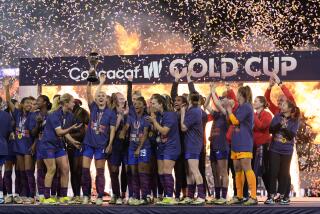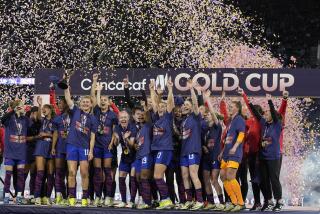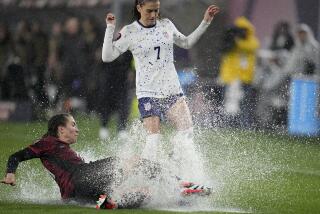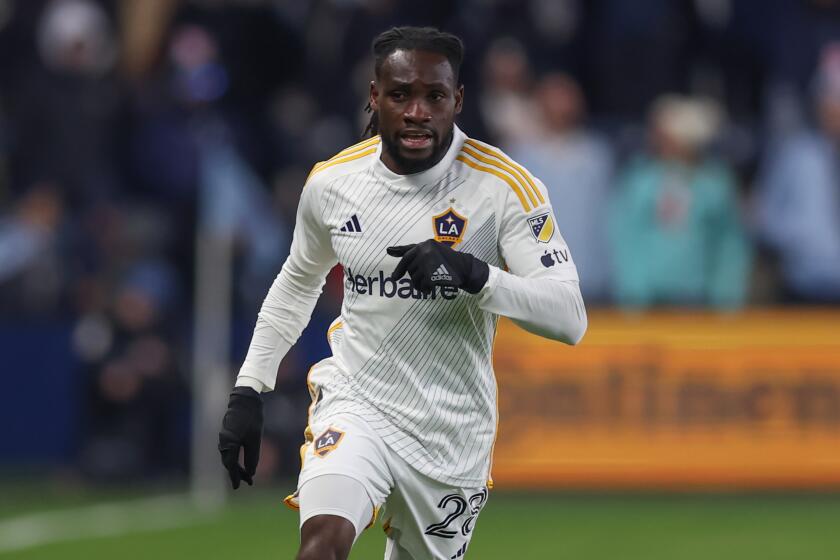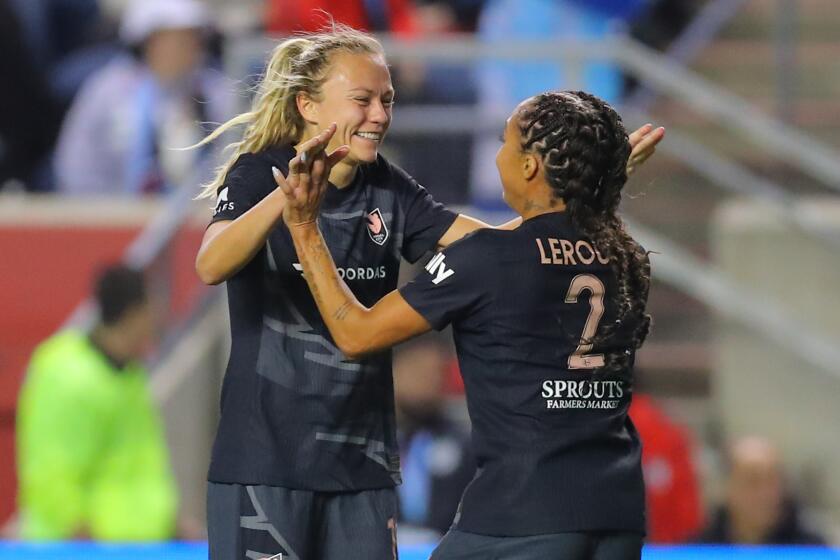U.S. women’s soccer team trying for quick start in quest for World Cup title

U.S. midfielder
Shannon Boxx has vivid memories of the last women’s World Cup. And not just because the U.S. lost.
Rather, it was how the Americans lost that proved impossible to forget, with the U.S. twice blowing one-goal leads before falling to Japan on penalty kicks.
“We were so close,” Boxx said, drawing out the final word. “It took me months to get over that one. You’re seeing every single person that was in that one saying we need to win this one.”
The U.S. will get started on that Monday when it meets Australia in the first of its three group-play games before a largely pro-U.S. crowd of more than 30,000.
But for Boxx and her teammates, 14 of whom were on the U.S. roster four years ago, this World Cup isn’t so much about making up for lost time as it is about making this time count. Ten players will be at least 30 years old when next month’s final is played, making the U.S. team the oldest in the tournament.
And for some — including forward Abby Wambach (35), midfielders Boxx (37) and Carli Lloyd (32) and goalkeeper Hope Solo (33) — that means this is probably their last opportunity to win a World Cup title, a prize that has eluded the Americans for 16 years.
“This is it. The last chance to add another star above that crest,” Lloyd said.
“I want to win a World Cup, as [do] so many other players. So anything but first place is definitely a failure in our book.”
Making that happen won’t be easy, though. Although the U.S. got good news Sunday about forward Alex Morgan, who will be available after missing the last two months to a bone bruise on her left knee, an expanded World Cup field means the Americans will have to play seven games in less than 30 days if they make the final.
And for the first time, the tournament will be played on artificial turf, a surface U.S. midfielder Megan Rapinoe likened to padded concrete.
“Turf makes a difference and puts a little more wear and tear on the body,” Wambach agreed.
That could work in the Americans’ favor, though, because more games on a punishing surface will test a team’s depth — and in addition to having the oldest team in the tournament, the U.S. may have the deepest team as well.
Morgan’s status could change that, though. If she suffers a setback or her playing time is limited, that could force U.S. Coach Jill Ellis to give additional minutes to the aging Wambach, shortening the U.S. bench.
“If called upon to start, I’d be ready to start,” said Morgan, who was wearing an ice bag on her left knee after training Sunday. “If I need to play 90 [minutes] then I would play 90.”
That’s unlikely, since Morgan returned to full training just a week ago. But she said there was never a doubt in her mind she’d play in this World Cup.
“I always felt like when it came to the World Cup, when we got to Canada, I would feel healthy. It would be mind over matter,” she said. “It puts me more at ease knowing that I actually feel healthy. And that my knee is actually doing well.”
Then there’s the group the U.S. was drawn into, which is, on paper, the most competitive in the tournament. After Australia, ranked 10th in the world, the U.S. faces No. 5 Sweden on Friday before closing pool play against Nigeria, a nine-time African champion, next week in Vancouver.
Any stumble in the first round could prove costly for the Americans, listed behind only Germany in the FIFA world rankings. That’s because if the U.S. wins the group it would be matched against a third-place team in the round of 16, making the path to the final considerably easier.
If they finish second though, the Americans are likely to face Brazil in their first knockout game. And if they win that, they could meet defending champion Japan in the quarterfinals.
A quick start is important, then, and the U.S. is confident it can achieve that against an Australian team it has not lost to in 24 tries.
“There’s an air of confidence,” Lloyd said. “But at the same time, this isn’t just a walk in the park. This is the first game. It’s going to be a lot different.”
The players on both sides certainly know each other because nine Australians have played professionally in the U.S. One of those is speedy forward Lisa De Vanna, who scored five goals in the last two World Cups, leading Australia to the quarterfinals both times.
But for Wambach, who is making her fourth run at that elusive title, none of the challenges are insurmountable. In less than a month, a World Cup will be awarded in Vancouver, and to get there, the U.S. must get through group play first.
“We’re going to play Australia, Sweden and Nigeria,” Wambach said. “They’re in my way to what I want to do. And if you’re in my way, look out.”
Twitter: @kbaxter11

